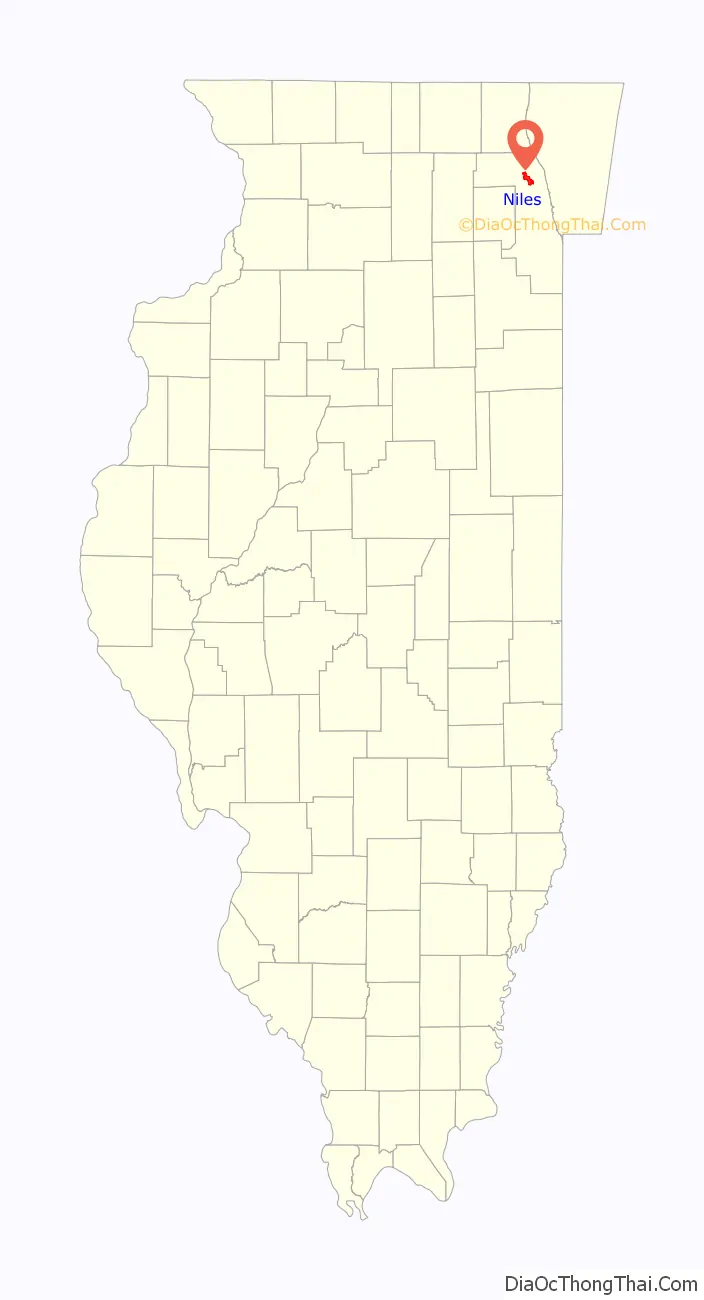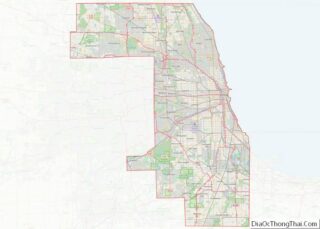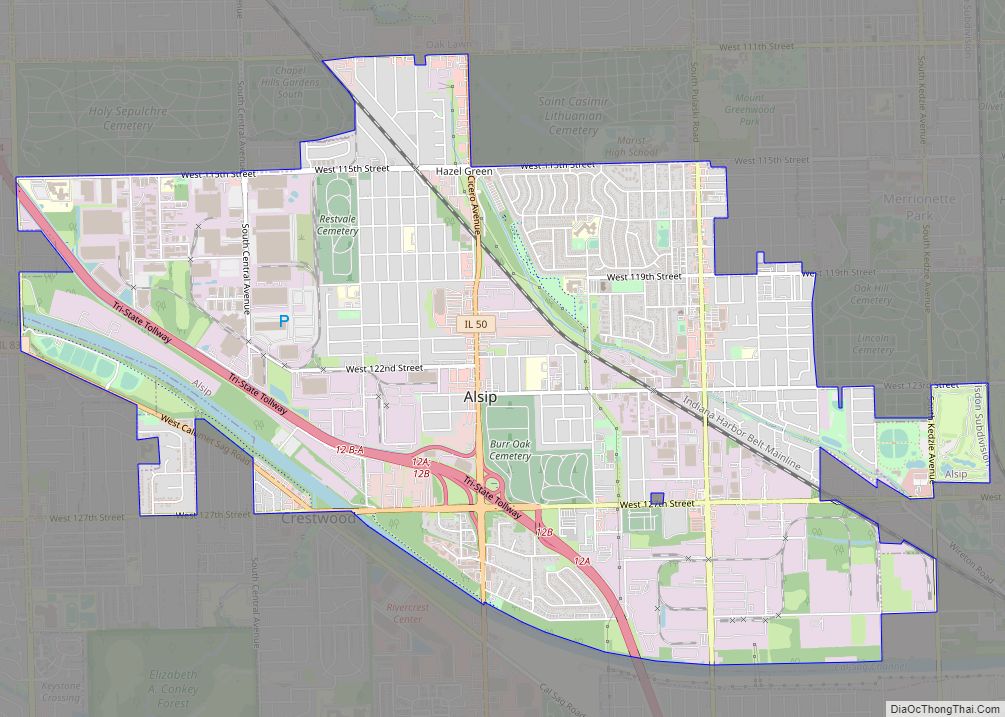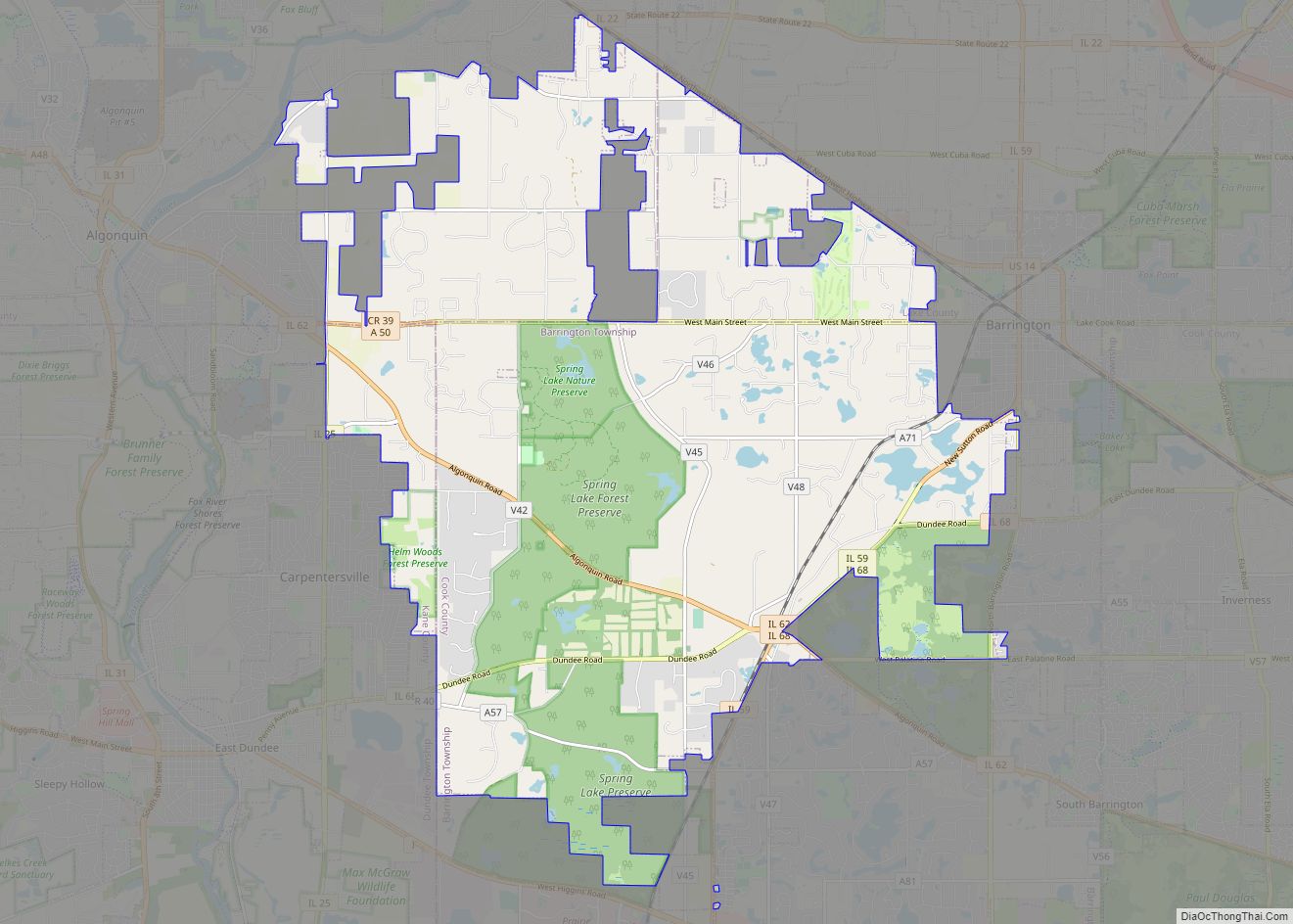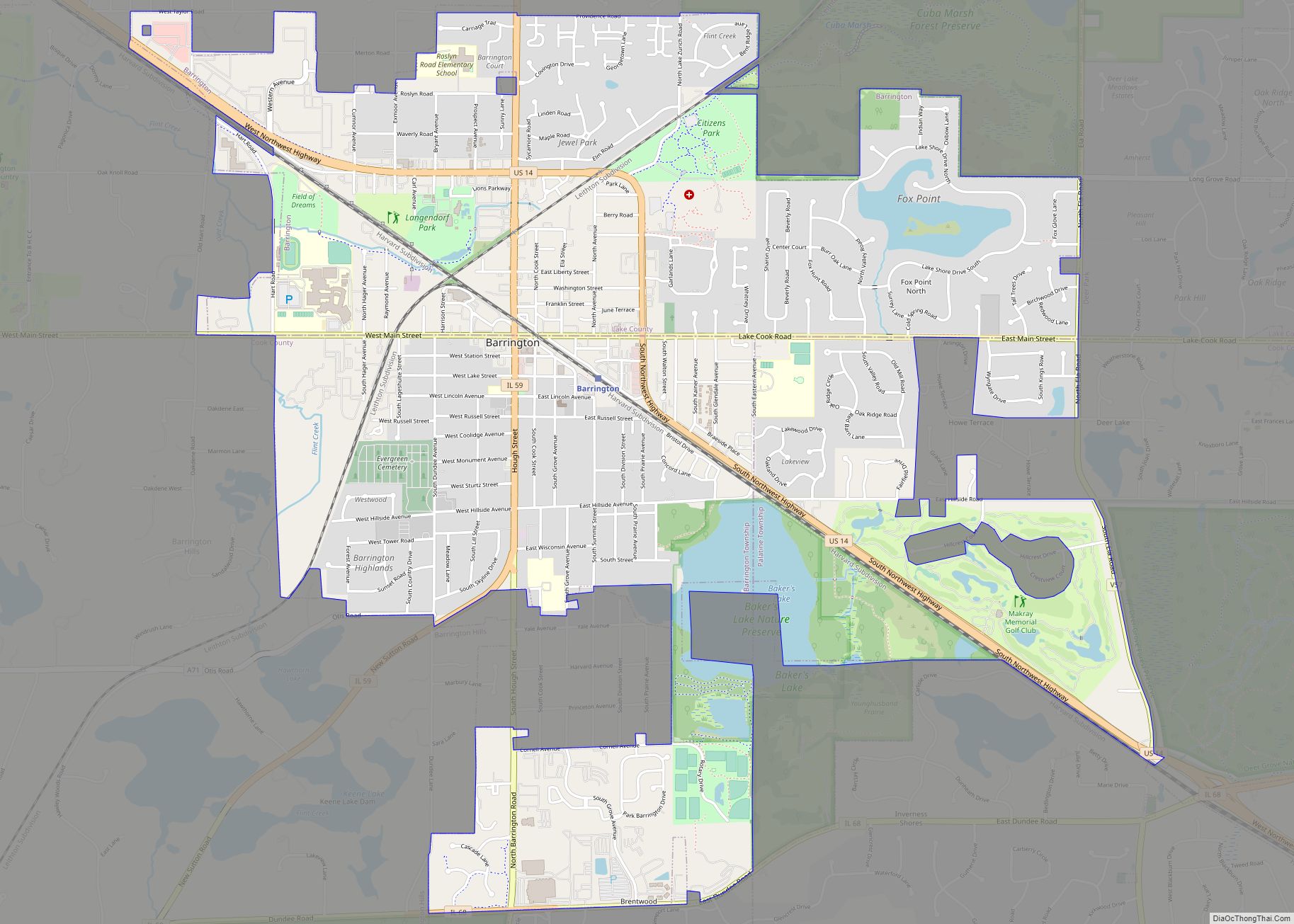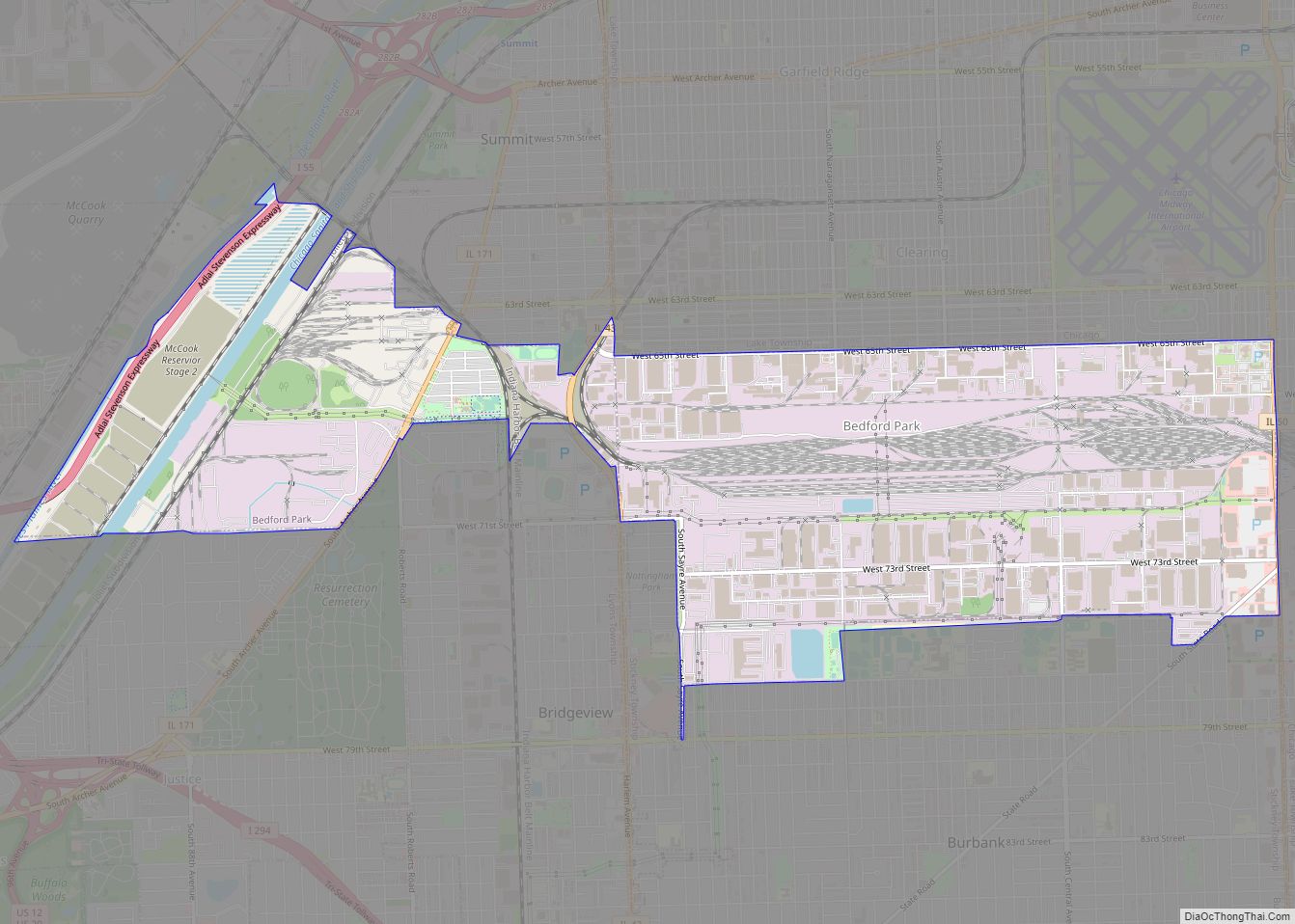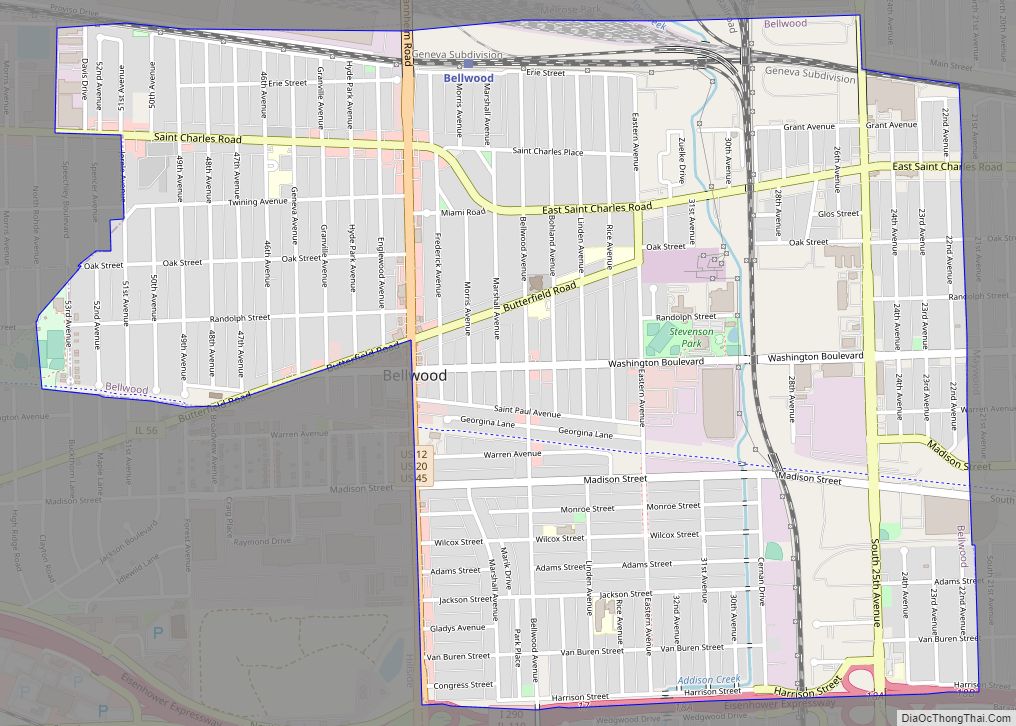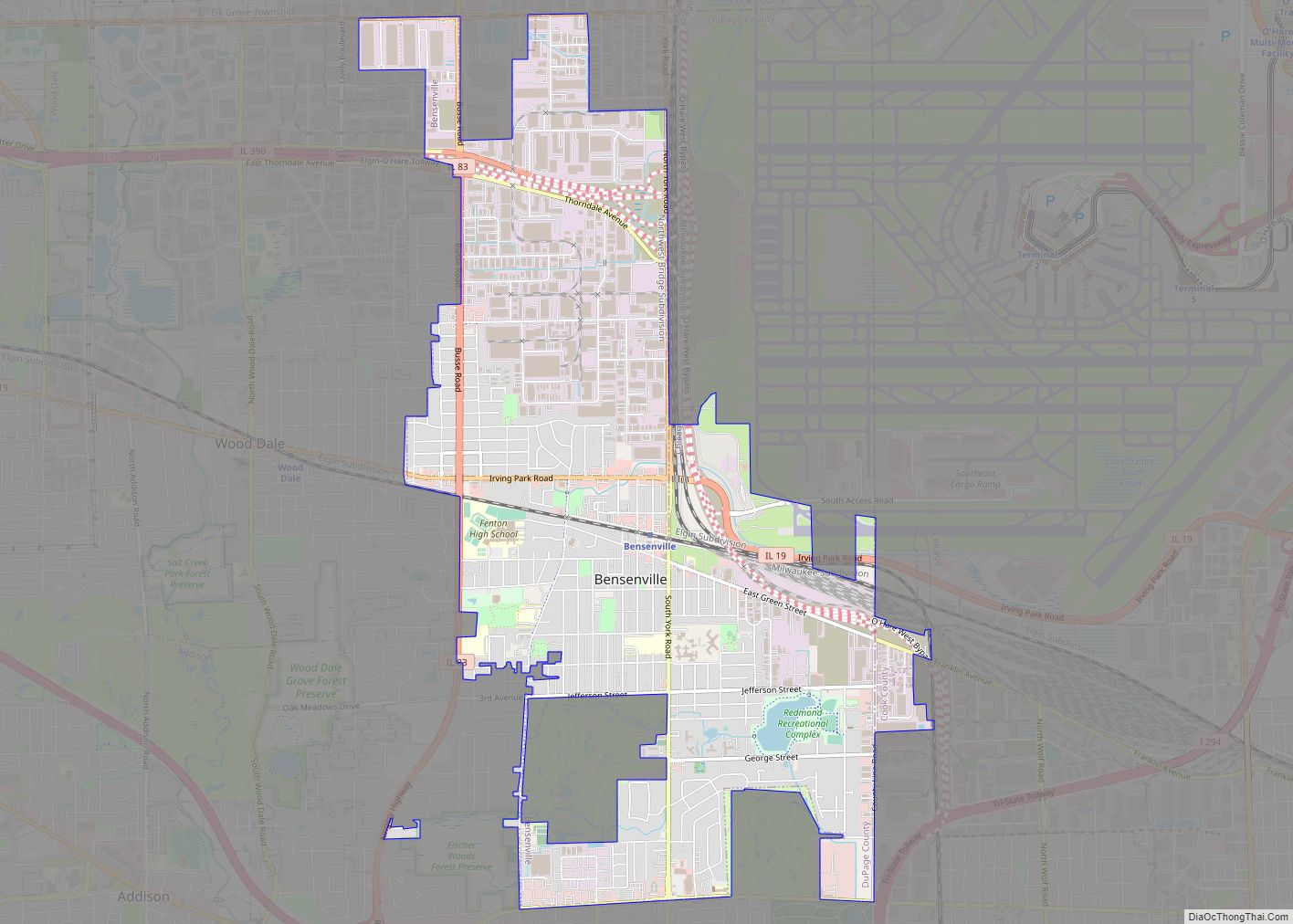Niles is a village in Cook County, Illinois, United States, located in the townships of Maine and Niles, directly neighboring the City of Chicago’s far northwest border. Per the 2020 census, the population was 30,912. The current mayor of Niles is George Alpogianis.
| Name: | Niles village |
|---|---|
| LSAD Code: | 47 |
| LSAD Description: | village (suffix) |
| State: | Illinois |
| County: | Cook County |
| Incorporated: | 1899 |
| Elevation: | 646 ft (197 m) |
| Total Area: | 5.85 sq mi (15.15 km²) |
| Land Area: | 5.85 sq mi (15.15 km²) |
| Water Area: | 0.00 sq mi (0.00 km²) |
| Total Population: | 30,912 |
| Population Density: | 5,285.91/sq mi (2,040.87/km²) |
| FIPS code: | 1753000 |
| Website: | www.vniles.com |
Online Interactive Map
Click on ![]() to view map in "full screen" mode.
to view map in "full screen" mode.
Niles location map. Where is Niles village?
History
Joseph Curtis settled in what became Niles in 1827, and John Dewes followed in 1831. The settlement was originally called “Dutchman’s Point”, referring to German immigrants who followed, including John Plank of Hesse-Darmstadt (who sold whiskey to passing travelers and remaining Native Americans) and the Ebinger brothers of Stuttgart, as well as John Schadiger, Julius Perren, John-Jackson Ruland (d. 1880) and Revolutionary war soldier John Ketchum.
Many people of Native American ancestry lived in the area; Chief Blackhawk reportedly often smoked a peace pipe with Christian Ebinger. Article 4 of the Second Treaty of Prairie du Chien, signed on July 29, 1829 between the United States government and several chiefs of the Chippewa, Ottawa, and Potawatamie left particular tracts of land to individuals of mixed-Native American ancestry. Among them were Billy Caldwell, Victoria Pothier, and Jane Miranda. Land titled to these individuals eventually established part of the border of Niles. During the 1832 Black Hawk War, one band of Native Americans may have reached Billy Caldwell’s property as part of an attempt to reclaim land lost to the United States. Hostilities ended in 1833, and most Native Americans immediately left, moving west of the Mississippi River
Niles and Niles Township founding
The Ebingers settled near Milwaukee and Touhy Avenues in the early 1830s. John Ebinger had been the head gardener for King William in Württemberg, Germany, but moved to the United States (initially Ann Arbor, Michigan) when he was 62. His eldest son Frederick had traveled to Chicago and worked on the pier or harbor by 1832, and was soon joined by his brother John Jr. and their wives, as well as John Plank. John Ebinger and his youngest son Christian (at 21 newly married to orphaned Barbara Reuhle of Stuttgart in 1834; both of whom walked the route to enable their elders to ride) packed and traveled to join them, but found Chicago too swampy to farm. After their horse stepped on a rattlesnake and died shortly after crossing the North Branch of the Chicago River on an Indian trail leading towards Milwaukee, the Ebingers built a cabin at Milwaukee and Harlem Avenues, and laid claim to 80 acres (0.32 km) of land. The older Ebinger brothers (one of whom married the sister of Fort Dearborn’s commanders’ wife) soon joined them, as did the Planks. John Plank soon sold his house to Mr. Phillips, who opened a store and became the area’s first postmaster. Christian Ebinger or his son of the same name (born 1835 and the first white child born in the area, d. 1879), became the first minister to be ordained in their German Evangelical Association, and served as the Village Collector, Township Assessor and Overseer of the Poor (from 1852 to 1865) and Highway Commissioner, as well as left seven surviving children.
There is no clear indication of the origin of the name “Niles.” A Chicago Tribune article from 1929 opined that the name referred to the Niles Weekly Register, a popular newspaper published in the 1820s and 1830s by fervently nationalist (and abolitionist) Quaker Hezekiah Niles out of Baltimore, Maryland. His son William Ogden Niles published the newspaper from Washington, D.C. until it ceased publication in 1849; the Odgen family had longstanding connections with the Chicago area. Another belief is that the name “Niles” was named after Niles Construction which did much of the building early during the city’s founding. Alternatively, soldiers from Niles, Michigan reinforced Fort Dearborn during the Black Hawk War, and afterward may have sent word back about the rich farmland to the north. Three early families of settlers came from Niles, Michigan with troops or had relatives at Fort Dearborn. An early history of Cook County, Illinois reported that every two weeks a half-breed Indian traveled to Niles, Michigan for mail. By 1834 a twice-weekly stage connected Chicago and Niles. The North Branch Hotel was built in 1837 and the White House tavern in 1847. By 1839, a traveling German preacher visited Dutchman’s Point every two or three weeks.
Niles Township was organized in a meeting at the North Branch Hotel on April 2, 1850, a year after John Odell donated land at Milwaukee and Harlem Avenues to build a second school (constructed by John Ketchem, who was active in the Methodist church) and four years after Joseph Curtis returned to England. Blacksmith Benjamin Lupton had returned to England to marry, then returned with his bride to Dutchman’s Point in 1840, and remained the settlement’s blacksmith for the next two decades. Residents later said the township name was chosen before the public meeting. The following year, the township adopted an ordinance to regulate livestock running amok. By 1858, Henry Harms had a store on Harms Avenue in Niles Center, the township’s other population center, which was later renamed Skokie. By 1890, that area had six saloons, two blacksmith shops and three churches.
Post–World War II growth
Along with neighboring Skokie and several other suburbs, Niles is partly within Niles Township, from which it draws its name. The village of Niles was formally incorporated by the state of Illinois on August 24, 1899. The village had a population of 500 people at that time. Niles, like neighboring communities Skokie, Park Ridge and Glenview, grew significantly after veterans of World War II and the Korean War returned home to the Chicago area and established families in the streetcar suburbs. In 1950, Niles had only 3,500 people, but as former farms and nurseries redeveloped into housing, the population tripled in the next five years, then nearly doubled, reaching 18,863 people in 1962. Unlike Park Ridge, Skokie and Glenview, Niles did not have its own commuter rail stop. Residents who did not use their own automobiles to reach their jobs could connect by bus to the Chicago Transit Authority stops at Jefferson Park or the Skokie Swift, or with the Chicago and Northwestern Commuter rail line (incorporated into Metra) in Park Ridge or Glenview or at intervening stops such as Norwood Park and Edison Park (once part of Niles Township until annexed by Chicago). Niles became the first community in Illinois, and one of the first in the United States to establish free ambulance service, in 1946. Several decades later, it instituted a free bus service to connect residents with local shops, government offices and transit options (shown).
In 1964, under then-new mayor Nicholas B. Blase, Niles was named an “All America City”. Niles grew by selectively annexing nearby unincorporated areas of Cook County, the most important for tax revenue purposes being the area that became the Golf Mill Shopping Center. Its population peaked in 1970 at 31,432 people. Blase, the son of Greek immigrants raised in Chicago’s Bridgeport neighborhood and a law and business graduate of University of Notre Dame, had moved to Niles in 1959 and initially worked as a claims adjuster for Allstate Insurance Company. He would become Niles’ longest-serving mayor, but resigned in a scandal in 2008 which led to his federal criminal conviction for steering insurance business to cronies. Ironically, Blase was first elected in 1961, when he upset Frank Stankowicz, a former motorcycle cop who had won election first as village clerk, then had won election and re-election as mayor for two decades before passing the gavel to the young upstart. Blase’s “New Era Party” ran a door-to-door campaign against corruption (police turning a blind eye to local gambling houses, and prostitution flourishing near the Chicago border) and builder favoritism. During his nearly five decades as mayor, Blase established a free bus service, a new village hall, a senior and fitness center, and a new police station, as well as jobs for nearly 500 municipal employees. Blase resigned in 2008 amid federal charges that he participated in an insurance kickback scheme. Several months later he pleaded guilty to mail fraud and tax evasion, and admitted that he had pressured local businesses to buy insurance from a friend’s agency in return for a share of the commissions, receiving more than $420,000 over a period of more than 30 years. In 2010 Blase, then 81 years old, was sentenced to a year and a day in prison. After serving his term – first in federal prison, then in a halfway house, and then in home confinement – he returned to live in Niles. In 2011, his name was removed from the plaza outside the village hall and post office. Blase died in 2019.
Niles Road Map
Niles city Satellite Map
Geography
Niles is located at 42°1′40″N 87°48′36″W / 42.02778°N 87.81000°W / 42.02778; -87.81000 (42.0277127, -87.8100990).
According to the 2021 census gazetteer files, Niles has a total area of 5.85 square miles (15.15 km), all land.
Niles is adjacent to Chicago to the south, Skokie to the east, Morton Grove to the northeast, Glenview to the north, and Park Ridge and unincorporated Cook County (and portions of Chicago) to the west.
The town is centered along Milwaukee Avenue which forms a main artery diagonally through the town on a northwest–southeast bearing.
The North Branch of the Chicago River flows through the eastern part of the town roughly in a north-to-south direction.
See also
Map of Illinois State and its subdivision:- Adams
- Alexander
- Bond
- Boone
- Brown
- Bureau
- Calhoun
- Carroll
- Cass
- Champaign
- Christian
- Clark
- Clay
- Clinton
- Coles
- Cook
- Crawford
- Cumberland
- De Kalb
- De Witt
- Douglas
- Dupage
- Edgar
- Edwards
- Effingham
- Fayette
- Ford
- Franklin
- Fulton
- Gallatin
- Greene
- Grundy
- Hamilton
- Hancock
- Hardin
- Henderson
- Henry
- Iroquois
- Jackson
- Jasper
- Jefferson
- Jersey
- Jo Daviess
- Johnson
- Kane
- Kankakee
- Kendall
- Knox
- La Salle
- Lake
- Lake Michigan
- Lawrence
- Lee
- Livingston
- Logan
- Macon
- Macoupin
- Madison
- Marion
- Marshall
- Mason
- Massac
- McDonough
- McHenry
- McLean
- Menard
- Mercer
- Monroe
- Montgomery
- Morgan
- Moultrie
- Ogle
- Peoria
- Perry
- Piatt
- Pike
- Pope
- Pulaski
- Putnam
- Randolph
- Richland
- Rock Island
- Saint Clair
- Saline
- Sangamon
- Schuyler
- Scott
- Shelby
- Stark
- Stephenson
- Tazewell
- Union
- Vermilion
- Wabash
- Warren
- Washington
- Wayne
- White
- Whiteside
- Will
- Williamson
- Winnebago
- Woodford
- Alabama
- Alaska
- Arizona
- Arkansas
- California
- Colorado
- Connecticut
- Delaware
- District of Columbia
- Florida
- Georgia
- Hawaii
- Idaho
- Illinois
- Indiana
- Iowa
- Kansas
- Kentucky
- Louisiana
- Maine
- Maryland
- Massachusetts
- Michigan
- Minnesota
- Mississippi
- Missouri
- Montana
- Nebraska
- Nevada
- New Hampshire
- New Jersey
- New Mexico
- New York
- North Carolina
- North Dakota
- Ohio
- Oklahoma
- Oregon
- Pennsylvania
- Rhode Island
- South Carolina
- South Dakota
- Tennessee
- Texas
- Utah
- Vermont
- Virginia
- Washington
- West Virginia
- Wisconsin
- Wyoming

